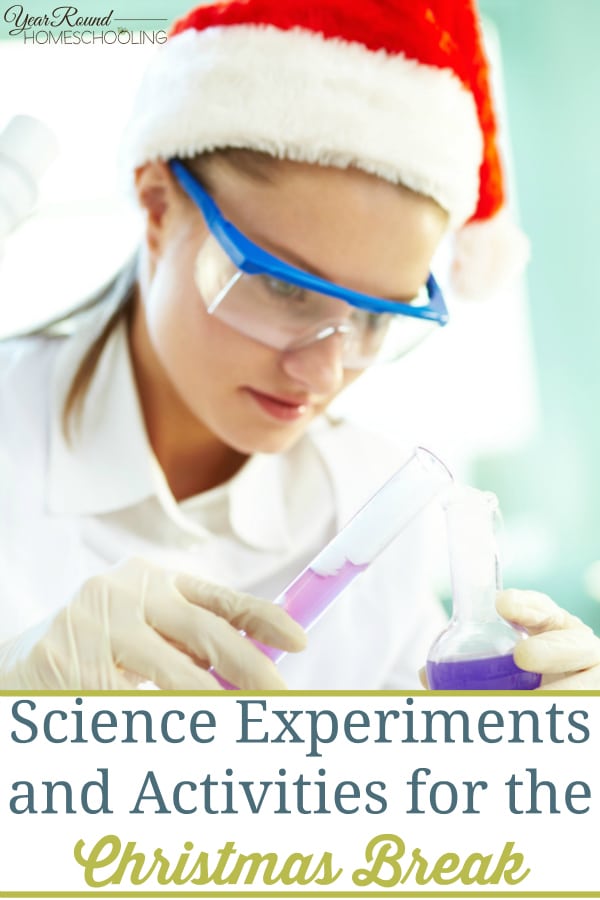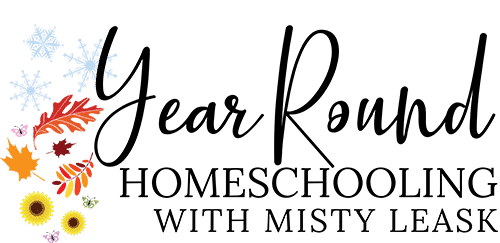Christmas is right around the corner. Just because most of us take the time around the Christmas season off of school, that does not mean learning has to stop. Winter provides lots of opportunities to study science and do science experiments at home. Let me share with you some Christmas/Winter science experiments and activities that you can do during the month of December.

Winter is a great time to teach your kids about the four parts of the water cycle: Evaporation, condensation, precipitation and saturation. During winter there is a different dynamic that goes on.
You can explain to your kids something like: “The ground and the air has cooled down because the sun hits the earth at an angle. So, the sun’s heat still evaporates water from the ocean, but now the temperature above the ground is cold, and the higher up you go, the colder it is. That very cold air eventually turns that water vapor into crystals and that is how we get snow.”
Some other concepts you can explore with your kids are how when water freezes, it expands, and about the formation of crystals.
Experiments:
Sugar Crystals
Supplies:
- 1 cup of water
- pan for boiling water
- 3 cups of sugar
- spoon or stirring rod
- clean glass jar
- pencil
- string or yarn
- paperclip
- magnifying glass
Boil water and add sugar one spoonful at a time. Stir to dissolve the sugar each time. When no more sugar will dissolve it will sit at the bottom and won’t disappear. Pour the sugar water in the glass jar.
Tie the piece of string to the middle of the pencil, then tie a paper clip to the end of the string, lay the pencil across the top of the jar so the string hangs down into the sugar water and the paper clip is in the sugar water. Make sure the string does not hit the sides of the jar.
Put the jar in a sunny place. Check your jar every day to see what’s happening. After one week, pull the string out of the jar.
You can do the same thing with salt. Instead of using sugar, use 2 cups of salt and dissolve it in 1 cup of warm (not boiling) water. Stir in a couple of drops of food coloring. Then follow the same process as for the sugar crystal experiment.
Snowflakes observation: Take a piece of black paper with you outside, next time it snows, and try to catch some snowflakes on it. Don’t forget your magnifying glass to look at them before they melt.
Make snowflake fossils:
Supplies:
- Clear Plastic
- Microscope Slides
- Hairspray – the aerosol spray kind, not the pump kind
- Snowflakes
- Toothpicks
- Magnifying glass.
Put the slides in the freezer so they get really cold (this will prevent the snowflakes from melting too quickly. Put the hairspray in an unheated garage, or place where it will be cold but not frozen solid.
The next time it snows take your slides out and spray on one side. Catch a snowflake on that sticky side of the slide.
Use the toothpick to gently move the snowflake to the middle of the slide. Carefully put the slide in a covered, cold place like an unheated garage and don’t touch it for several hours. That will give the hairspray a chance to harden into the snowflake shape.
Once the hairspray has hardened, you will have a perfect image of the snowflake to study, and time to be the scientist with your magnifying glass or microscope!
Activities:
A very fascinating thing to study during the Christmas season is how holly and mistletoe are opposites. Holly feeds the environment around it (birds and animals eat its berries) causing it to prosper and flourish. However, mistletoe feeds off of its surrounding environment eventually causing death and decay.
You may want to also use this science class as a character lesson and ask your children to decide what kind of plant they want to be? Do they want to be like mistletoe, sucking the life from others or like holly, giving life to those around them?
Santa Science Lab: 5 fun experiments with a holiday twist
10 Christmas Science Activities
ow it’s your turn. Do you have any science experiments or activities you want to share with us?
Follow our science Pinterest board below to keep your kids busy with science activities, experiments and more this year!
Follow Misty Leask’s board Homeschool: Science on Pinterest.
